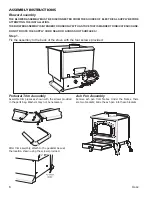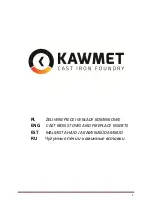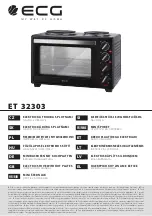
Issue F: 18/02/14
17
TEST FOR SPILLAGE
A Spillage test
MUST
be carried out before the appliance is left with the
customer.
Carry out the test by first closing all doors and windows in the room containing
the fire.
Ensure that the fire is burning at full rate for a minimum of 5 minutes.
Using a smoke match
– run along the edge of the draught diverter, both sides of
the TTB Bracket as shown in diagram 17.
Most of the smoke should be drawn into the
draught diverter. If not, leave the stove running
at full rate for a further 10 minutes and repeat
the test. I
If there is a fan in an adjoining room the
spillage test must be repeated with the fan
running and all connecting doors between the
fire and fan open.
If there are still problems the chimney/flue or
ventilation may require attention. The stove
should not be used until the fault is rectified.
S
PILLAGE
M
ONITORING
S
YSTEM
This appliance is fitted with an ‘oxygen depletion system’ (ODS) pilot
assembly which will monitor any spillage from the appliance.
The system
MUST NOT
be adjusted or changed by the installer.
Replacement systems must be obtained from HS Gas; no other pilot
assembly must be substituted in its place.
The appliance is also fitted with a thermostatic switch (TTB). This switch is
located in the draught diverter and shuts off the gas supply should the flue
lack sufficient flow to prevent flue gas spillage. The TTB
MUST NOT
be
removed or ‘bridged out’ for any reason and only genuine HS Gas
replacements should be used. Nuisance shut down may occur if the stove is
not installed in accordance with the clearance distances set out in page 5.
Diagram 17





































